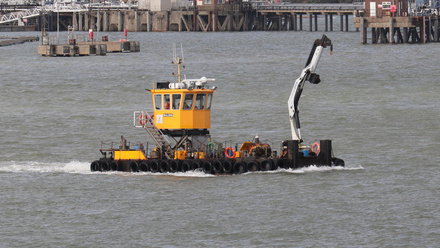Bosun electrocuted on board bulk carrier, Sophia Z
A lack of local and global regulations around the testing of portable electrical appliances on ships is in the spotlight following the third electrocution in a two-year period.
High wind and waves, low visibility and shallow waters are easy to take note of and prepare for when it comes to shipping, but electrical dangers such as frayed cabling, poorly maintained equipment or water ingress can get overlooked.
Worse, long stints at sea make it inevitable that hasty repairs take place to keep necessary equipment up and running.
The recent case aboard the Bahamas-flagged bulk carrier Sophia Z illustrates the consequences of failing to repeatedly test equipment and underscores the need for the rigorous oversight of portable electrical gear, following the death of an experienced bosun through electrocution.
Indeed, as noted in the Marine Safety Investigation Report, “At least three seafarers have been electrocuted by portable cargo lamps in a two year period.”
What happened on Friday, 30th August 2024
On the afternoon of 30 August, the Bahamas-flagged bulk carrier Sophia Z was mid-ocean on passage from Las Palmas to Taichung with a cargo of phosphate rock.
Deck work proceeded as planned, accompanied by fair weather and moderate swells. The ship’s bosun, a 48-year-old Filipino national with more than two decades of service with the company, had spent the morning supervising painting and maintenance in and around the forecastle store.
He was also tasked with checking the integrity of weathertight doors, a job he had planned to complete that day, using a lamp to check around the lip of the closed door to see whether light was visible. Following the mid-afternoon break, the bosun returned alone to the store.
Around 15:35, a junior deck rating entered the store and was confronted with the sight of the bosun motionless on the deck, clutching an extension cable and portable lamp. Instinctively, the rating reached out to assist and received a small shock in return.
Quickly unplugging the extension reel from the bulkhead power supply, breaking the circuit, the deck rating ran for assistance. On deck he met the chief officer, who rushed to the ship’s office to raise the alarm using the public address system.
The chief officer retrieved oxygen from the ship’s hospital and joined others in moving the casualty into open air and attempting resuscitation.
When moved to the ship’s hospital, the crew continued cardiopulmonary resuscitation and further tried to help with an automated external defibrillator, but no heart activity was detected. By 16:00, less than half an hour after discovery, the bosun was declared dead.
A subsequent examination revealed that the portable lamp had been crudely adapted, with two electrical cables soldered together and wrapped in electrical tape.
Fitted with a two-pin plug incompatible with the vessel’s sockets, the lamp had been connected via an extension reel designed with its own residual current device (RCD).
But neither the RCD nor the ship’s circuit protection had operated. The bosun, sweating in the 30°C heat with only thin cotton gloves, had no protection against the current, with burns on his wrist and forearm aligning with the lamp’s steel hook.
Lessons learned on Sophia Z
The investigation by the Bahamas Maritime Authority confirmed that electrocution was the cause of death and that the portable lamp was the source of leakage.
It also exposed gaps in the vessel’s safety management - no consideration had been given to the hazards of portable electrical equipment.
There was no system for testing or controlling such equipment, and no record of the lamp in question’s origin. The first responder’s electric shock, though minor, further revealed an absence of adequate training in recognising and securing electrical dangers before attempting a rescue.
The case underlined the vulnerability of portable gear to damage, poor maintenance, and mishandling. Unlike fixed installations, these items are handled daily, exposed to knocks, moisture and improvised repairs.
Without structured oversight, unsafe equipment can remain in circulation until failure occurs. In this instance, a faulty cable joint and an ineffective RCD were enough to overcome a series of defences and left the bosun fatally exposed.
Following the accident, the ship’s managers, Saint Michael Shipping Co. Ltd., undertook a fleet-wide review.
All portable floodlights were replaced with low-voltage models operating at 36 volts. Electrical inspections were incorporated into the planned maintenance system, with insulation resistance testing mandated alongside visual checks. Saint Michael Shipping also conducted training sessions with crews on the hazards of electricity and the correct handling of portable tools.
At the regulatory level, the investigation noted the absence of international standards governing the testing of portable electrical appliances on ships.
It recommended that the Bahamas Maritime Authority integrate verification of portable equipment safety into its inspection programme, and that it should propose global standards in this area to the IMO, alongside other interested states.
Tell us what you think about this article by joining the discussion on IMarEST Connect.
Image: bulk carrier Sophia Z. Credit: Bahamas Maritime Authority






